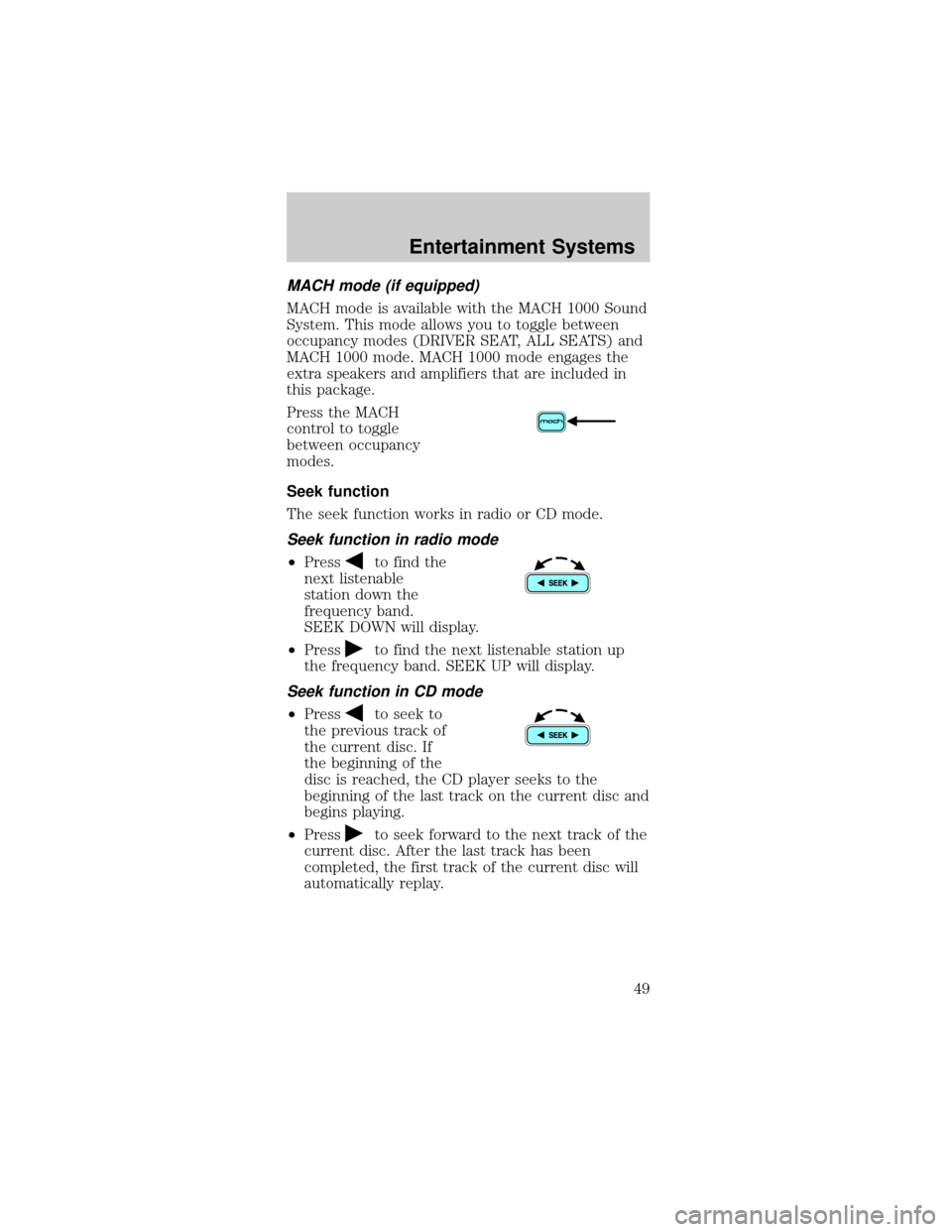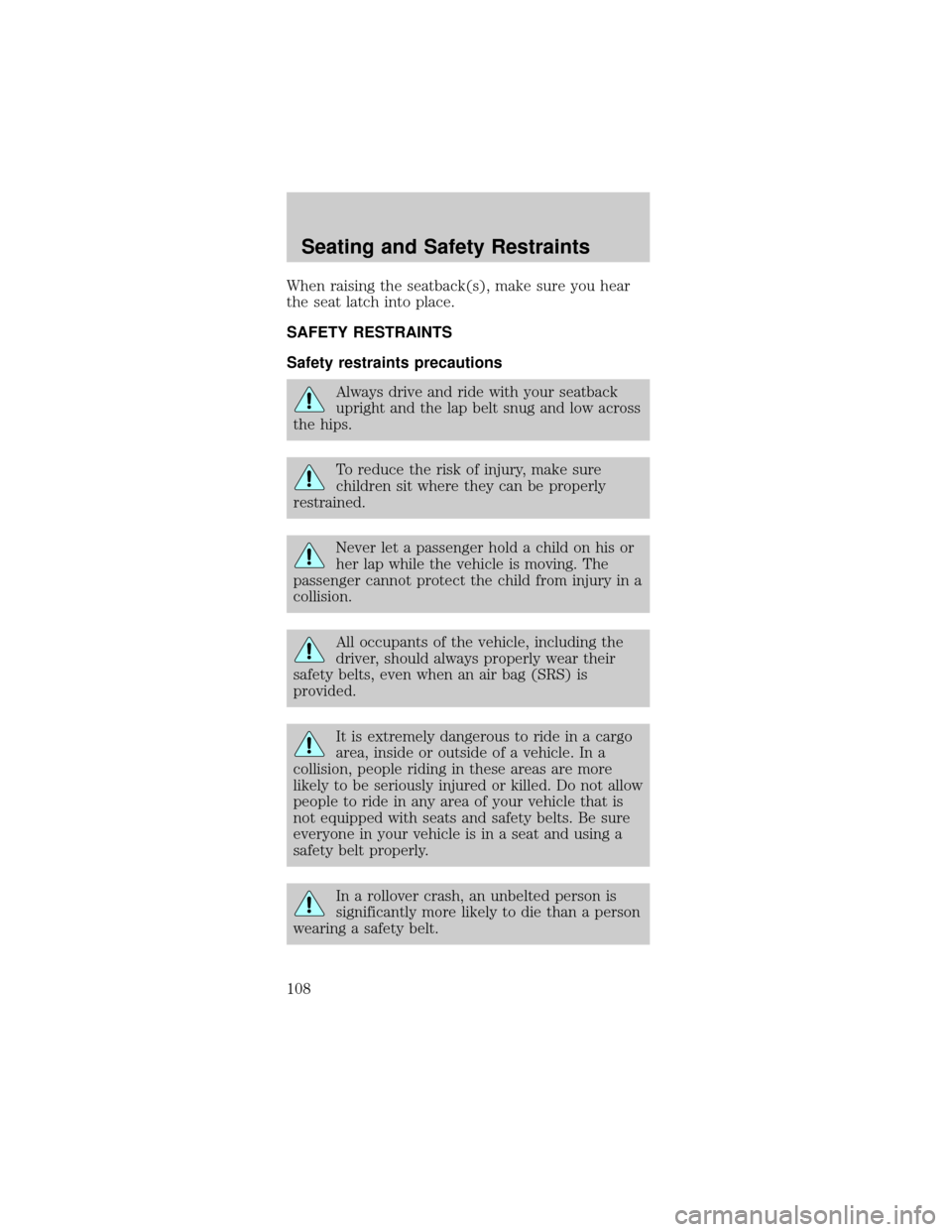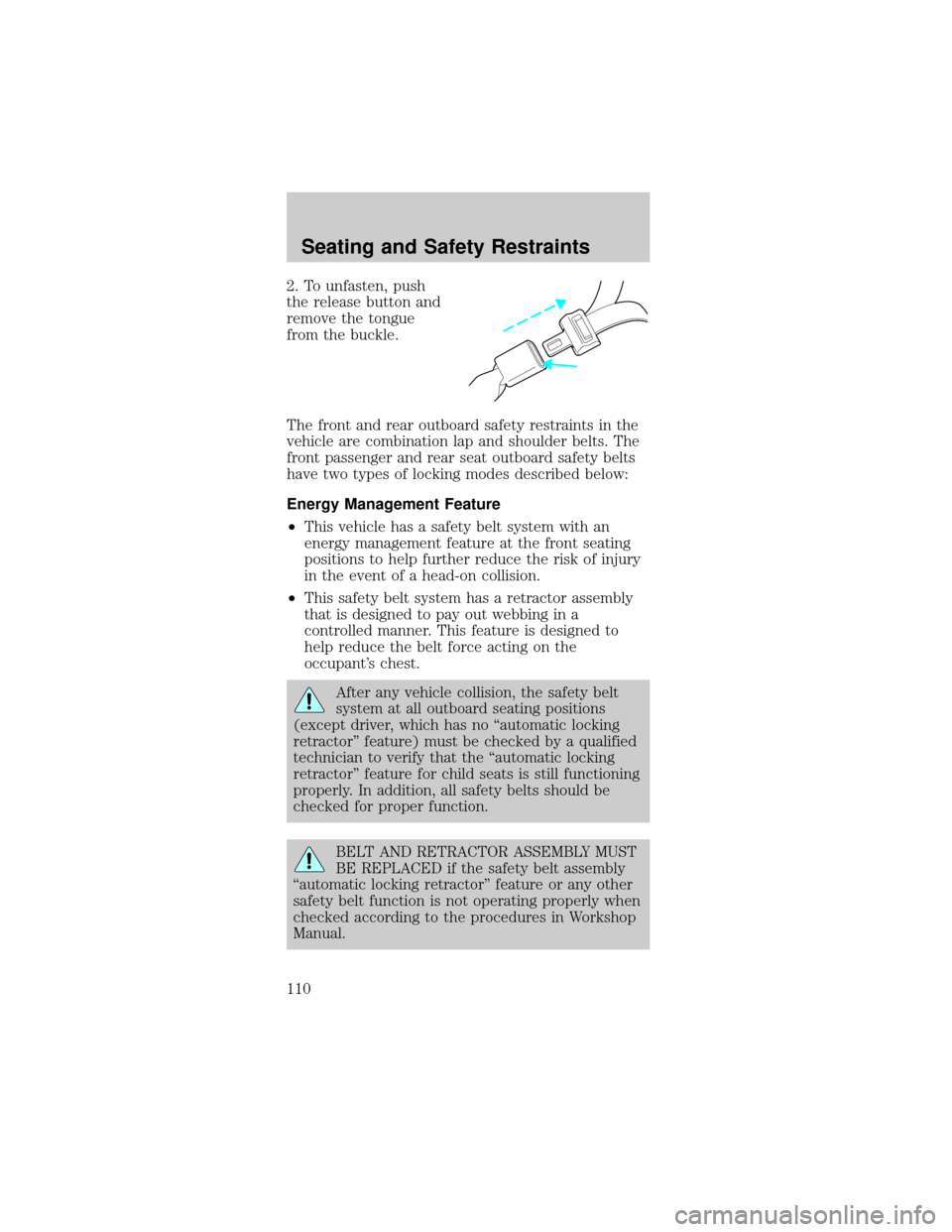Page 6 of 264

BREAKING-IN YOUR VEHICLE
There are no particular guidelines for breaking-in
your vehicle. During the first 1 600 km (1 000 miles)
of driving, vary speeds frequently. This is
recommended to give the moving parts a chance to
break in.
SPECIAL NOTICES
Emission warranty
The New Vehicle Limited Warranty includes
Bumper-to-Bumper Coverage, Safety Restraint
Coverage, Corrosion Coverage, and 7.3L Power
Stroke Diesel Engine Coverage. In addition, your
vehicle is eligible for Emissions Defect and
Emissions Performance Warranties. For a detailed
description of what is covered and what is not
covered, refer to theWarranty Guidethat is
provided to you along with your Owner's Guide.
Special instructions
For your added safety, your vehicle is fitted with
sophisticated electronic controls.
By operating other electronic equipment
(e.g. mobile telephone without exterior
aerial) electromagnetic fields can occur which can
cause malfunctions of the vehicle electronics.
Therefore you should observe the instructions of
the equipment manufacturers.
Please read the sectionAir bagin the
Seating and safety restraintschapter.
Failure to follow the specific warnings and
instructions could result in personal injury.
Rear facing child or baby seats should
NEVERbe used in front of a passenger side
air bag.
Introduction
6
Page 49 of 264

MACH mode (if equipped)
MACH mode is available with the MACH 1000 Sound
System. This mode allows you to toggle between
occupancy modes (DRIVER SEAT, ALL SEATS) and
MACH 1000 mode. MACH 1000 mode engages the
extra speakers and amplifiers that are included in
this package.
Press the MACH
control to toggle
between occupancy
modes.
Seek function
The seek function works in radio or CD mode.
Seek function in radio mode
²Pressto find the
next listenable
station down the
frequency band.
SEEK DOWN will display.
²Press
to find the next listenable station up
the frequency band. SEEK UP will display.
Seek function in CD mode
²Pressto seek to
the previous track of
the current disc. If
the beginning of the
disc is reached, the CD player seeks to the
beginning of the last track on the current disc and
begins playing.
²Press
to seek forward to the next track of the
current disc. After the last track has been
completed, the first track of the current disc will
automatically replay.
Entertainment Systems
49
Page 62 of 264

²NEWSкvoice-onlyº type of sound with a limited
audio band
Press the DSP control again to access the occupancy
modes. Use the SEL control to optimize the sound
based upon the occupants in the vehicle.
The following occupancy modes can be selected for
the MACH 460 Sound System:
²ALL SEATS
²DRIVER SEAT
²REAR SEATS
The following occupancy modes can be selected for
the MACH 1000 Sound System:
²ALL SEATS
²DRIVER SEAT
²MACH 1000
MACH 1000 mode raises the bass response of the
trunk mounted subwoofers.
CD units are designed to play commercially
pressed 12cm audio compact discs only. Due to
technical incompatibility, certain recordable
and re-recordable compact discs may not
function correctly when used in Ford CD
players. Irregular shaped CDs, CDs with a
scratch protection film attached, and CDs with
homemade paper (adhesive) labels should not
be inserted into the CD player. The label may
peel and cause the CD to become jammed. It is
recommended that homemade CDs be identified
with permanent marker rather than adhesive
labels. Please contact your dealer for further
information.
TROUBLESHOOTING THE CD PLAYER
(IF EQUIPPED)
The laser beam used in the compact disc
player is harmful to the eyes. Do not
attempt to disassemble the case.
Entertainment Systems
62
Page 104 of 264
SEATING
Adjustable head restraints (if equipped)
Your vehicle's seats may be equipped with head
restraints which are vertically adjustable. The
purpose of these head restraints is to help limit head
motion in the event of a rear collision. To properly
adjust your head restraints, lift the head restraint so
that it is located directly behind your head or as
close to that position as possible. Refer to the
following to raise and lower the head restraints.
The head restraints
can be moved up and
down.
Adjusting the front manual seat
Never adjust the driver's seat or seatback
when the vehicle is moving.
Do not pile cargo higher than the seatbacks
to reduce the risk of injuring people in a
collision or sudden stop.
Always drive and ride with your seatback
upright and the lap belt snug and low across
the hips.
Reclining the seatback can reduce the
effectiveness of the seat's safety belt in the
event of a collision.
Seating and Safety Restraints
104
Page 107 of 264
REAR SEATS
Use the seatback
release to fold the back
of the front seat
forward for rear seat
passenger entry or exit.
This release handle is
located on the lower
outboard back of the
seat. The seatback
locks automatically when returned to the normal
position.
The rotating boot on the front seat belt is designed
to allow rear seat entry/exit. To enter the rear seat:
1. Remove safety belt
from safety belt guide
on top of front seat.
2. Rotate the safety
belt boot rearward.
3. Enter the rear seat in front of the safety belt.
4. Rotate the safety belt boot forward and place the
belt in the belt guide on the seat back to allow use
by the front driver/passenger.
2nd seat/split-folding rear seat (if equipped)
One or both rear seatbacks can be folded down to
provide additional cargo space.
To lower the
seatback(s) from inside
the vehicle, pull tab to
release seat back and
then fold seatback
down.
Seating and Safety Restraints
107
Page 108 of 264

When raising the seatback(s), make sure you hear
the seat latch into place.
SAFETY RESTRAINTS
Safety restraints precautions
Always drive and ride with your seatback
upright and the lap belt snug and low across
the hips.
To reduce the risk of injury, make sure
children sit where they can be properly
restrained.
Never let a passenger hold a child on his or
her lap while the vehicle is moving. The
passenger cannot protect the child from injury in a
collision.
All occupants of the vehicle, including the
driver, should always properly wear their
safety belts, even when an air bag (SRS) is
provided.
It is extremely dangerous to ride in a cargo
area, inside or outside of a vehicle. In a
collision, people riding in these areas are more
likely to be seriously injured or killed. Do not allow
people to ride in any area of your vehicle that is
not equipped with seats and safety belts. Be sure
everyone in your vehicle is in a seat and using a
safety belt properly.
In a rollover crash, an unbelted person is
significantly more likely to die than a person
wearing a safety belt.
Seating and Safety Restraints
108
Page 110 of 264

2. To unfasten, push
the release button and
remove the tongue
from the buckle.
The front and rear outboard safety restraints in the
vehicle are combination lap and shoulder belts. The
front passenger and rear seat outboard safety belts
have two types of locking modes described below:
Energy Management Feature
²This vehicle has a safety belt system with an
energy management feature at the front seating
positions to help further reduce the risk of injury
in the event of a head-on collision.
²This safety belt system has a retractor assembly
that is designed to pay out webbing in a
controlled manner. This feature is designed to
help reduce the belt force acting on the
occupant's chest.
After any vehicle collision, the safety belt
system at all outboard seating positions
(except driver, which has no ªautomatic locking
retractorº feature) must be checked by a qualified
technician to verify that the ªautomatic locking
retractorº feature for child seats is still functioning
properly. In addition, all safety belts should be
checked for proper function.
BELT AND RETRACTOR ASSEMBLY MUST
BE REPLACED if the safety belt assembly
ªautomatic locking retractorº feature or any other
safety belt function is not operating properly when
checked according to the procedures in Workshop
Manual.
Seating and Safety Restraints
110
Page 111 of 264

Failure to replace the Belt and Retractor
assembly could increase the risk of injury in
collisions.
Vehicle sensitive mode
The vehicle sensitive mode is the normal retractor
mode, allowing free shoulder belt length adjustment
to your movements and locking in response to
vehicle movement. For example, if the driver brakes
suddenly or turns a corner sharply, or the vehicle
receives an impact of approximately 8 km/h (5 mph)
or more, the combination safety belts will lock to
help reduce forward movement of the driver and
passengers.
The safety belt system can also be made to lock
manually by quickly pulling on the shoulder belt.
Automatic locking mode
In this mode, the shoulder belt is automatically
pre-locked. The belt will still retract to remove any
slack in the shoulder belt.
The automatic locking mode is not available on the
driver safety belt.
When to use the automatic locking mode
²Any timea child safety seat is installed in a
passenger front or outboard rear seating position
(if equipped). Children 12 years old and under
should be properly restrained in the rear seat
whenever possible. Refer toSafety Restraints for
ChildrenorSafety Seats for Childrenlater in
this chapter.
Seating and Safety Restraints
111